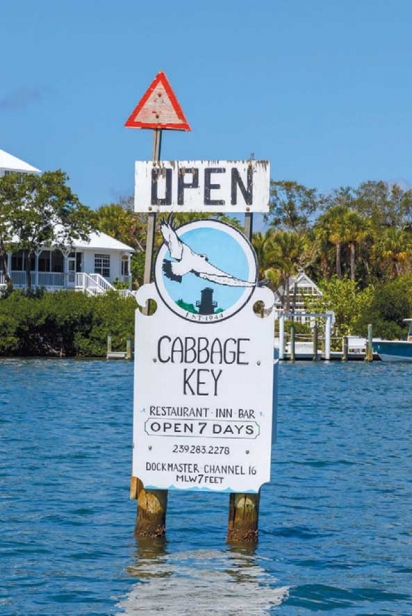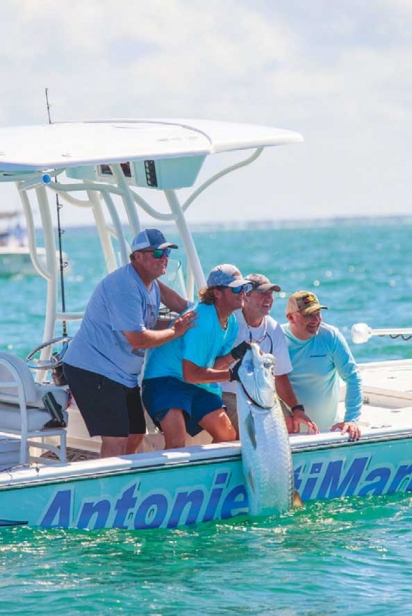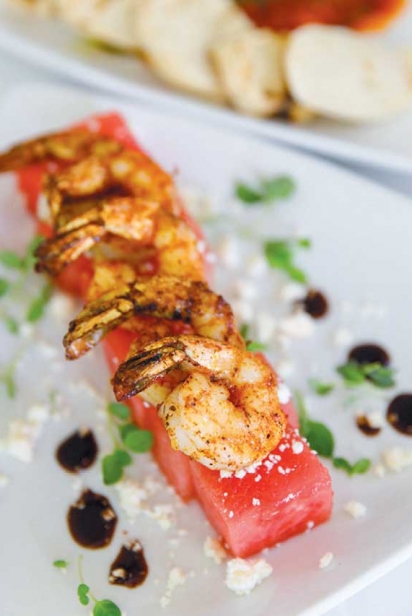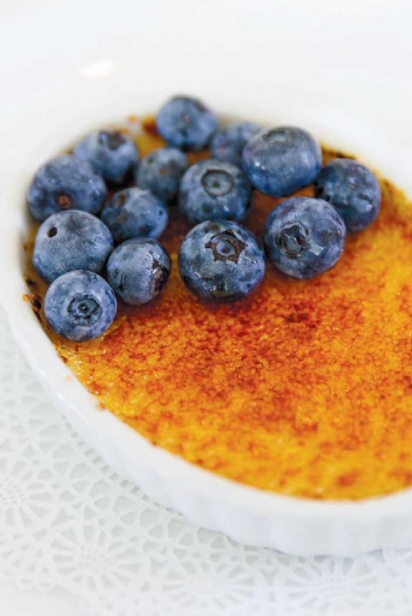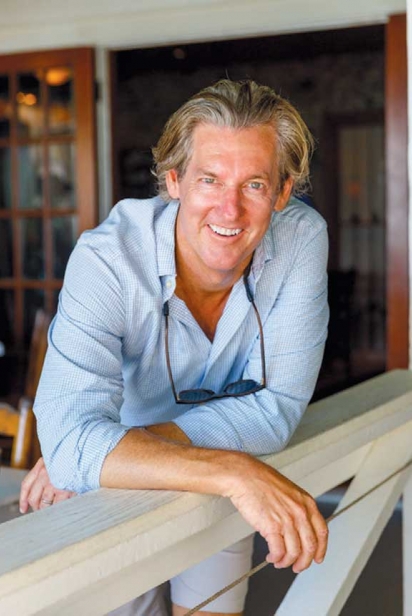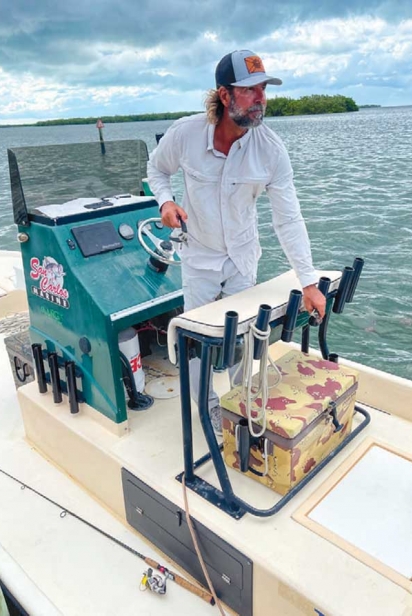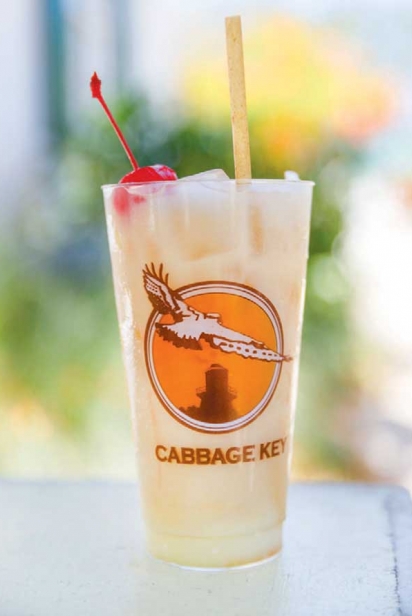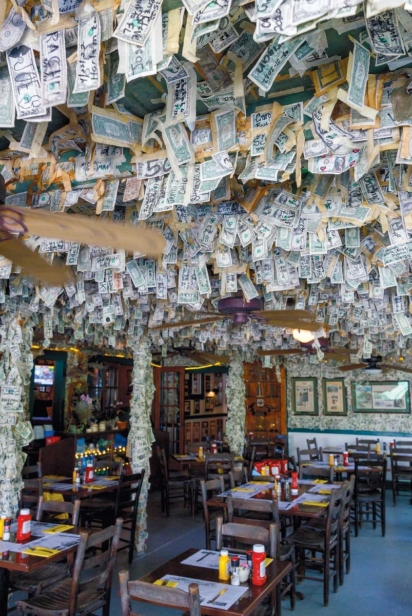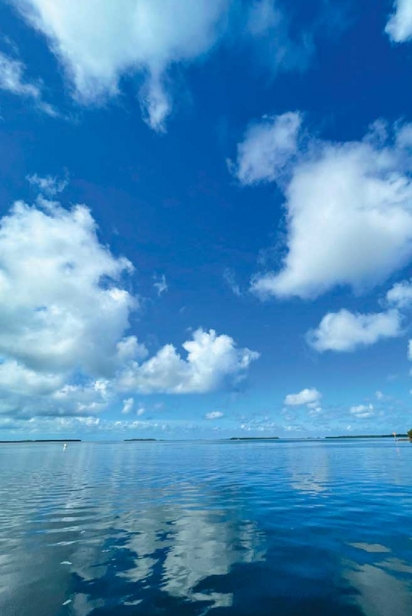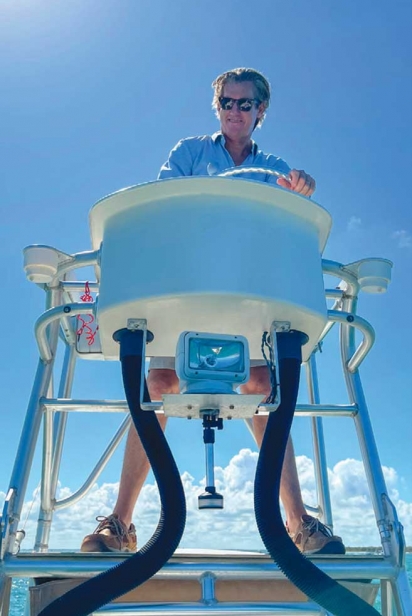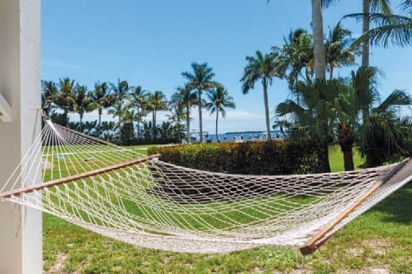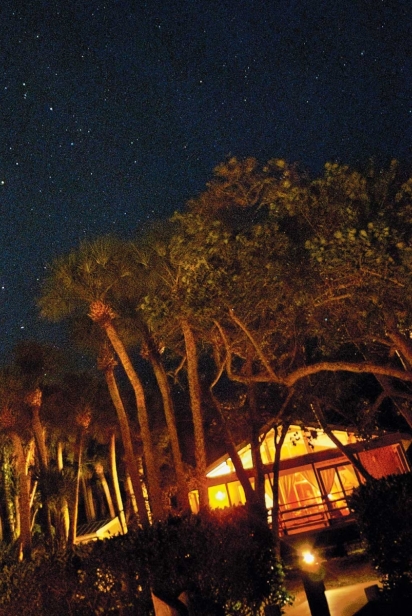Cheeseburger in Paradise
Rumor has it that Jimmy Buffett’s laid-back classic “Cheeseburger in Paradise” was penned at the Cabbage Key bar after a fruitful day spent fishing in the surrounding crystal blue waters of the Gulf Coast. Call it a myth, an urban legend, or merely a careless whisper—but the story lingers in the balmy breeze. The bar is famous—with or without Mr. Buffett’s melodic blessing— thanks to upwards of $70,000 in signed dollar bills papering the walls and ceiling, left by various tourists, day-trippers, celebs, and socialites.
The fact is that it doesn’t matter if it’s true—it only matters that it could be true. When you’re out on the patio enjoying the cheeseburger in question and looking out over the lush green lawn that slopes down to the glittering blue water, you can be forgiven for imagining that this place might have been the muse for any number of prolific pop stars. Surely, this view could have floated behind Belinda Carlisle’s eyelids as she crooned about Heaven being a place on earth; certainly, Sade must have kicked off her sandals and skipped through this very grass as she harmonized about Paradise; doubtless, Seals & Crofts composed “Summer Breeze” from the end of that dock outside the Cabbage Patch Cottage.
I visited Cabbage Key for the first time as a teenager and the intervening decades have done little to dull the magic that seems to cover the island in a brilliant diaphanous sparkle—a natural filter that can’t be replicated for your Instagram aesthetic. The first magical aspect of an excursion to Cabbage Key is the voyage itself because— unlike Key West, Sanibel, or even Boca Grande—you can’t get to Cabbage Key by car. If life’s a journey and not a destination, then I’d like mine to be by boat whenever possible. We are fortunate for this trip to avail ourselves of a lift and a tour from Cabbage Key’s own “son of a sailor,” Robert Wells III. Rob is everything that one could wish for in a tour guide: He’s knowledgeable, passionate, and talented. He’s at ease with his surroundings in a way that reflects the 40+ years that he and his family have spent as stewards of the past, present, and future of this incredibly special island. On this spectacular summer day Rob is at the helm as we depart from the Pineland Marina, conveniently situated a stone’s throw from Cabbage Key’s sister property, Tarpon Lodge, in Bokeelia on Pine Island.
Tarpon Lodge may be the most charming little hotel in all of Southwest Florida. With fireplaces and floors dating back to 1926 and a fine-dining restaurant boasting a full liquor bar, Tarpon Lodge strikes just the right note between Old Florida charm and upscale allure. The first piece of history that we learn as we set sail is about the time that Hurricane Charley swept through and forever changed the landscape of Tarpon Lodge and the surrounding areas. The original owners of Tarpon Lodge had built his-and-hers boathouses, which were damaged so badly that in the wake of Charley they were relocated to the mainland and fixed up as guest accommodations. Rob’s father knew some friends with a crane that was used to pull the damaged structure out of the water and move it to the mainland. When you stay in The Boathouse cottage at Tarpon Lodge, you’re staying in a converted 1926 boathouse.
On our way past the lighthouse at Boca Grande, we make a little detour to check out a group of boats gathered in a loose pattern and engaged in the sport of tarpon fishing. We arrive just as one of the fishermen gets lucky and we watch as they take a quick picture of the enormous fish before releasing it back into the water. We notice that they don’t lift the fish too far out of the water and Rob explains that there are strict laws about the handling of the fish for its protection. Rob calls out to a boat that passes—it’s obvious that the occupants of the boat are guests at either Tarpon Lodge or Cabbage Key and it’s impressive to note that Rob is familiar with his guests even in open water. We’re passing by Useppa Island as we learn about the original inhabitants of this area when Rob spots a nearby dolphin. I’ve lived in Sarasota for 25 years and I’ve seen my share of dolphins, but what happened next was a first for me. Rob tells us that the dolphin wants to play and then he jokes that dolphins love country music, so he cranks the stereo and turns the boat around a couple of times and suddenly the dolphin is diving happily in and out of our wake like she’s front row at a Blake Shelton concert. I’m quick to tell Rob that I consider this dolphin-whispering talent to be almost unbelievable and when I ask, “How did you do that?” he shrugs nonchalantly: “I’ve known them for a while.”
Back to the original settlers—the Calusa tribe made their homes on these islands for many years, and they left their mark—in all-natural ways, of course. In the early 1900s new arrivals found the high points of the islands to be giant Indian shell mounds that were used to signal from one high point to another. The Calusa ate their shellfish dinners and then used the emptied shells to construct signal points … talk about a no-waste dining experience. Fast forward to the 1970s and Rob’s father, Robert Wells II, travels from High Point, North Carolina, to the high points of Cabbage Key where he falls in love with the island. Rob was 3 years old when his father persuaded his mother, Phyllis, to leave their perfectly good jobs and perfectly lovely home to move to an island in Florida with only a ship-to-shore phone. There’ve been a few concessions to mainland living over the years (Rob and his brother, Ken, needed to go to school after all) but it’s 40 years later and Rob and Phyllis still live on the island year-round. You can have The Notebook, this is my favorite love story.
Cabbage Key is staffed by around 50 people at any given time and only about 20 of them live here year-round. Some people stay for 10 years; others only manage a season. Spend some time at the bar, order yourself a Cabbage Creeper—or two—and chat with some people. I met a 95-year-old marathon runner named Doreen, who lives in Fort Myers but is originally from Scotland.
The beauty of the island is the lack. There’s a lack of traffic: only boats and (on occasion) helicopters. There’s a lack of nightlife unless you count the raccoons and the tortoises. There’s a lack of artifice: What you see is what you get, but what you get is so much more than what you see. It’s a family vacation that will force your kids (and you) to look at the stars instead of screens. It’s a day trip that reminds you that everything doesn’t always have to be so rushed. It’s an excuse to fish from the dock and play a board game and have a sleepover with your friends (even if they insist on playing the same Abba song over and over again).
The Cabbage Key of today is largely the same as the Cabbage Key from my first visit, over 20 years ago. There’s a few more dollar bills at the bar. There’s a different dockmaster (with a colloquial nickname that’s not fit to print). Other than that, it’s a paradise on an island in the sun that feels like heaven. Someone should definitely write a song about it …



